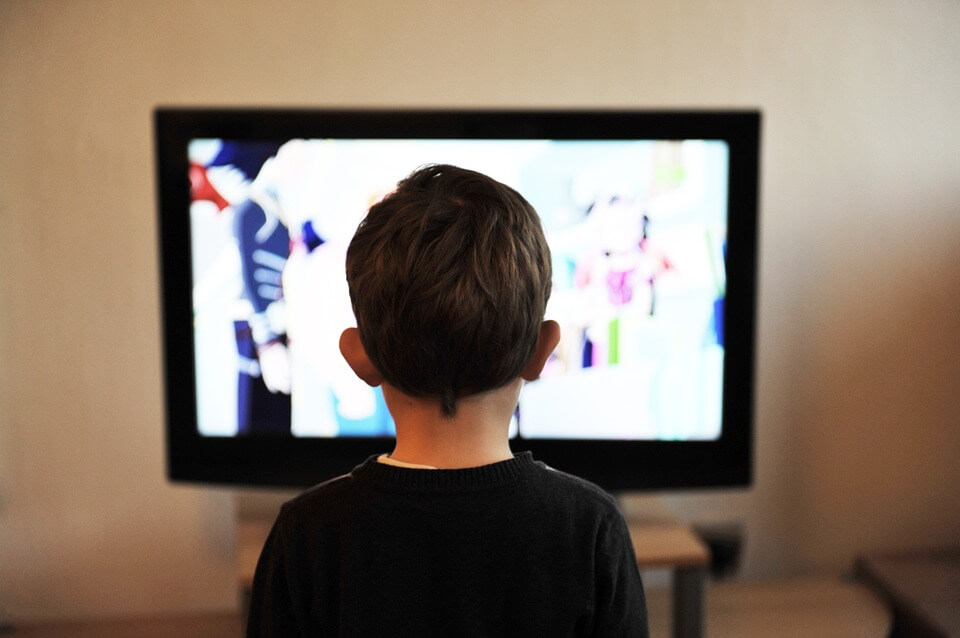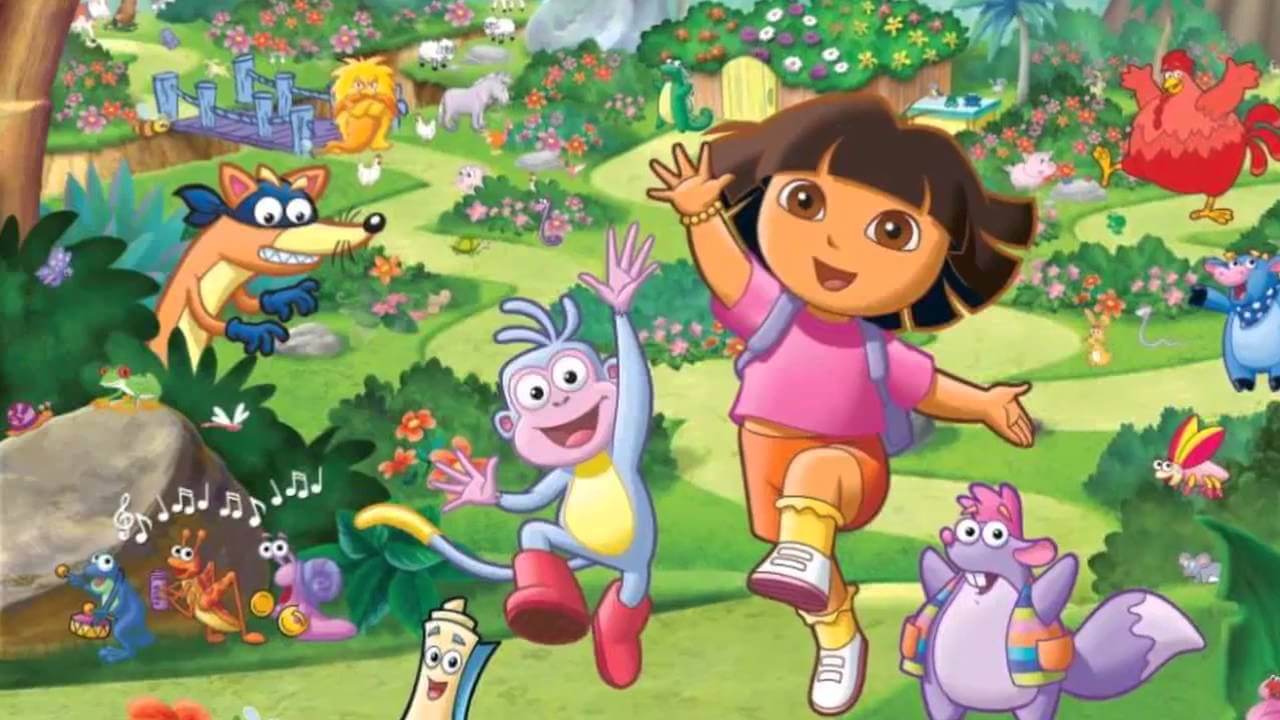Dora the Explorer: Why She's So Popular with Kids

Dora the Explorer is a cartoon series created in the United States in 2000. It’s aimed at preschool kids, and has been translated into 25 languages. The show is currently broadcast in 125 countries.
Nowadays, it’s considered a classic of children’s television. Its massive success is due to its deft combination of entertainment, education, and values.
One of the most interesting aspects of the show is that it involves audience participation. This adds significant value in educational terms, since it holds kids’ attention and allows them to actively learn new things.
Meet Dora the Explorer
Dora Márquez is a seven-year-old girl. Her best friend is Boots, a five-year-old monkey who accompanies her on all her adventures. In each episode, Dora needs to find something she’s lost. Sometimes, she helps Boots complete an assigned mission.
Dora always asks the kids watching at home to help her on her quest, and to solve the problems she encounters along the way. She also relies on help from Map and Backpack, two characters who also play an active role in the adventures.
The series is similar in form to an interactive video game. Everything revolves around concrete missions, which the viewers help to complete. There’s danger, mystery, and all the ingredients to immerse kids fully in the viewing experience.
Each episode of Dora the Explorer is approximately 23 minutes long. The series aired for eight seasons, with more than 150 episodes in total. Its success has been so significant that many consider the show to be a generational milestone.
What kids love about the show

It’s for good reason that Dora the Explorer is one of the most popular shows among small children. In addition to the entertaining way it presents its stories, it’s also a space where kids can gain knowledge and learn values.
Here are some of its greatest virtues:
- It teaches kids to participate. The show asks them to yell out loud and to help find things. This helps kids understand that their role in the world should be dynamic, not passive.
- It familiarizes kids with a different language. The series originally ran in English, and helps kids learn words in Spanish. In other languages, it makes a similar effort to make them more familiar with English. The show’s method makes it easy for kids to pick up basic words.
- It teaches kids about the environment. Nature and animals are two important presences on Dora the Explorer. This helps to broaden the sensibilities of children who live in urban settings.
- The music helps, too. The songs and musical themes are constant throughout the show. These elements help strengthen listening and memory, while also providing a fantastic atmosphere.
Dora the Explorer and Values

The way in which the show’s characters interact with one another also has an educational purpose.
The villain is a fox named Swiper, who always uses deception to steal things from Dora. This character acts as an example of how not to interact with others, and kids get it.
When the fox tries to steal something from Dora, she asks the little viewers to yell, “Swiper, no swiping!” This way, kids also become active agents of good values.
In Dora the Explorer, friendship carries an enormous amount of value. Dora and her friend Boots provide a great example of mutual support and affection.
The show reinforces the importance of cooperation and teamwork. The characters also exemplify a helpful attitude towards others.
One important element of the show is that Dora, on her many travels, learns about other cultures. When she encounters one, she adopts a position of curiosity and respect.
Due to this element, kids receive a multicultural perspective, where differences aren’t a source of conflict. Rather, they show how we complement one another. This is just one example of the show’s wisdom.
The show also teaches basic and necessary elements of healthy social interaction.
One example: saying hello and goodbye. It’s the sort of thing kids are just starting to learn at preschool age. They also learn how to say thank you, both in English and Spanish.
Cover image courtesy of ChameleonsEye / Shutterstock.com
Dora the Explorer is a cartoon series created in the United States in 2000. It’s aimed at preschool kids, and has been translated into 25 languages. The show is currently broadcast in 125 countries.
Nowadays, it’s considered a classic of children’s television. Its massive success is due to its deft combination of entertainment, education, and values.
One of the most interesting aspects of the show is that it involves audience participation. This adds significant value in educational terms, since it holds kids’ attention and allows them to actively learn new things.
Meet Dora the Explorer
Dora Márquez is a seven-year-old girl. Her best friend is Boots, a five-year-old monkey who accompanies her on all her adventures. In each episode, Dora needs to find something she’s lost. Sometimes, she helps Boots complete an assigned mission.
Dora always asks the kids watching at home to help her on her quest, and to solve the problems she encounters along the way. She also relies on help from Map and Backpack, two characters who also play an active role in the adventures.
The series is similar in form to an interactive video game. Everything revolves around concrete missions, which the viewers help to complete. There’s danger, mystery, and all the ingredients to immerse kids fully in the viewing experience.
Each episode of Dora the Explorer is approximately 23 minutes long. The series aired for eight seasons, with more than 150 episodes in total. Its success has been so significant that many consider the show to be a generational milestone.
What kids love about the show

It’s for good reason that Dora the Explorer is one of the most popular shows among small children. In addition to the entertaining way it presents its stories, it’s also a space where kids can gain knowledge and learn values.
Here are some of its greatest virtues:
- It teaches kids to participate. The show asks them to yell out loud and to help find things. This helps kids understand that their role in the world should be dynamic, not passive.
- It familiarizes kids with a different language. The series originally ran in English, and helps kids learn words in Spanish. In other languages, it makes a similar effort to make them more familiar with English. The show’s method makes it easy for kids to pick up basic words.
- It teaches kids about the environment. Nature and animals are two important presences on Dora the Explorer. This helps to broaden the sensibilities of children who live in urban settings.
- The music helps, too. The songs and musical themes are constant throughout the show. These elements help strengthen listening and memory, while also providing a fantastic atmosphere.
Dora the Explorer and Values

The way in which the show’s characters interact with one another also has an educational purpose.
The villain is a fox named Swiper, who always uses deception to steal things from Dora. This character acts as an example of how not to interact with others, and kids get it.
When the fox tries to steal something from Dora, she asks the little viewers to yell, “Swiper, no swiping!” This way, kids also become active agents of good values.
In Dora the Explorer, friendship carries an enormous amount of value. Dora and her friend Boots provide a great example of mutual support and affection.
The show reinforces the importance of cooperation and teamwork. The characters also exemplify a helpful attitude towards others.
One important element of the show is that Dora, on her many travels, learns about other cultures. When she encounters one, she adopts a position of curiosity and respect.
Due to this element, kids receive a multicultural perspective, where differences aren’t a source of conflict. Rather, they show how we complement one another. This is just one example of the show’s wisdom.
The show also teaches basic and necessary elements of healthy social interaction.
One example: saying hello and goodbye. It’s the sort of thing kids are just starting to learn at preschool age. They also learn how to say thank you, both in English and Spanish.
Cover image courtesy of ChameleonsEye / Shutterstock.com
All cited sources were thoroughly reviewed by our team to ensure their quality, reliability, currency, and validity. The bibliography of this article was considered reliable and of academic or scientific accuracy.
- Valdez Trejo, P. (2018). Transmisión de valores en el programa televisivo Dora la Exploradora: estudio de caso con niños de 3 a 5 años (Doctoral dissertation, Universidad Autónoma de la Ciudad de México: Colegio de Humanidades y Ciencias Sociales: Licenciatura en Comunicación y Cultura). https://repositorioinstitucionaluacm.mx/jspui/bitstream/123456789/1639/3/PAULINA%20VALDEZ%20TREJO_C%20y%20C.pdf
- Fuenzalida, V. (2008). Cambios en la relación de los niños con la televisión. https://repositorio.uc.cl/xmlui/bitstream/handle/11534/29206/Cambios%20en%20la%20relación%20de%20los%20niños%20con%20la%20televisión.pdf?sequence=1
- Marcaida Pérez, Y., Carreño Ortega, D., & Sánchez Pérez, O. 31PROCEDIMIENTOS LÚDICOS PARA LA ENSEÑANZA DEL INGLÉS EN LOS NIÑOS PREESCOLARES. https://conrado.ucf.edu.cu/index.php/conrado/article/view/595
This text is provided for informational purposes only and does not replace consultation with a professional. If in doubt, consult your specialist.








